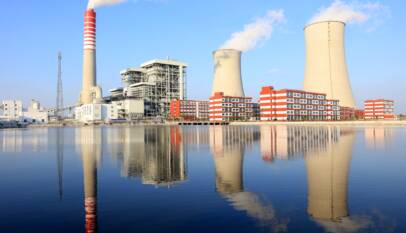China’s exemplary achievements: A lesson in socioeconomic development
The article, written by Dr Atta-ur-Rahman, a Pakistani organic chemist, highlights China’s exemplary achievements in socio-economic development and innovation, drawing valuable insights for developing countries like Pakistan. It discusses China’s strategic approach, which includes the establishment of innovation hubs, research parks, and industrial clusters, fostering collaboration between academia, industry, and government. The article emphasizes China’s focus on research and development, resulting in remarkable increases in R&D expenditure and international patent filings. The Spark Programme played a pivotal role in promoting entrepreneurship and supporting SMEs, while national-level engineering research centers and organizations like the National Natural Science Foundation of China (NSFC) facilitated technological breakthroughs. China’s success in higher education and talent development is also showcased, with various programs aimed at elevating the quality of education and attracting skilled professionals. The article underscores the importance of combatting corruption and implementing a dual-pronged strategy that prioritizes science, technology, education, and innovation, alongside stringent anti-corruption measures, to pave the way for Pakistan’s rapid socio-economic development. The article demonstrates China’s journey towards becoming a knowledge-driven economy and offers lessons for other nations seeking similar progress.
The process of socio-economic development in developing countries presents formidable challenges, yet valuable insights can be gleaned from China’s exemplary achievements. The swiftness with which the lives of so many have been transformed in human history serves as an inspiring testament to the nation’s success.
Approximately three years ago, I was humbled to receive the highest science award of China, known as The International Science and Technology Collaboration Award. The prestigious honor was conferred upon me by none other than His Excellency President Xi Jinping himself, during a special ceremony held at the illustrious Great Peoples Hall in Beijing. In his awe-inspiring address, President Xi Jinping eloquently expounded for a remarkable 90 minutes on how education, science, technology, and innovation have become the foundational pillars underpinning China’s miraculous transformation, propelling the nation to the forefront of the global stage.
China astutely recognized some 4 decades ago that socio-economic development hinged on its ability to manufacture and export high-technology goods with substantial value-added. Consequently, it elevated research and development to the highest national priority, fostering a conducive environment in both government institutions and private-sector enterprises, complete with integrated R&D facilities.
The impact of this visionary approach is staggering, with R&D expenditure witnessing a phenomenal 18 percent annual increase between 2000 and 2022. As a result, China not only surpassed the US as the world leader in innovation in 2020 but also filed an impressive number of international patents annually, witnessing a remarkable 200-fold increase over the last two decades, as per the World Intellectual Property Organization.
Notably, China’s commitment to progress is evident in various sectors, including agriculture, where the nation has meticulously implemented a range of measures to elevate productivity, ensure sustainability, and introduce cutting-edge technological advancements. Instrumental to these strides are the Chinese Academy of Agricultural Sciences (CAAS) and the China Agricultural University (CAU), seminal institutions propelling agricultural research and development. CAAS, as a national comprehensive agricultural research institution, has dedicated itself to the development of high-yield crop varieties, efficient farming techniques, and state-of-the-art agricultural technologies, while CAU, esteemed as one of China’s premier agricultural universities, has played a pivotal role in nurturing a highly skilled workforce in the field of agriculture.
Of particular significance in cultivating innovation and entrepreneurship was the groundbreaking Spark Programme. Serving as the bedrock of China’s technological development and economic growth, the Spark Programme extended essential funding and support to small and medium-sized enterprises (SMEs), thus encouraging entrepreneurship. As a result, it contributed to the rise of new businesses in China, propelling the private sector into a formidable driving force behind the country’s economic advancement.
Moreover, the Spark Programme’s financial support for research and development led to the emergence of novel technologies and products, significantly enhancing productivity and competitiveness across diverse industries. Its strategic focus on key technologies crucial for China’s progress, such as information technology, biotechnology, advanced manufacturing, nanotechnology, energy, and space engineering, solidified the nation’s technological prowess in these promising domains, laying the foundations for future growth.
The Spark Programme fostered international cooperation by facilitating joint research projects with foreign universities and companies. This not only built bridges between China and the rest of the world but also facilitated valuable technology transfer and knowledge sharing, further boosting China’s global standing.
China’s commitment to innovation is further demonstrated by the establishment of several cutting-edge innovation centres, including the renowned Zhongguancun Science Park in Beijing and the prestigious Zhangjiang Hi-Tech Park in Shanghai. These centres, generously supporting startups and entrepreneurs, place special emphasis on cutting-edge technologies within pivotal emerging disruptive fields. Underpinning these endeavours is a national innovation policy, offering tax incentives to startups and providing substantial funding to SMEs.
To effectively manage major science and technology projects, China enacted the National Science and Technology Major Project Management Measures in 1997, updating them in 2019. These measures provide a robust framework, encompassing intellectual property protection and technology transfer. The significance of intellectual property rights is further underscored by the Patent Law and the Copyright Law of the People’s Republic of China, enacted in 1984 and 1990, respectively, and revised at various intervals.
Strengthening science, technology, and higher education received unyielding support through various initiatives. The 973 Program, also known as the National Basic Research Program, initiated in 1997, provides essential funding for fundamental research in critical areas like biotechnology, information technology, and environmental science. Similarly, the 863 Program, or the National High-Tech Research and Development Program, launched in 1986, supports research and development in high-tech domains, including aerospace engineering, energy, and telecommunications.
Promoting innovation and fostering collaboration between universities, research institutions, and industry remained a key goal with the launch of the National Innovation System in 2006. In 1998, the Changjiang Scholars Program attracted top scholars from across the globe to contribute their expertise to Chinese universities and research institutions.
China’s monumental investments in science and technology education have borne fruit, with an impressive number of students pursuing PhD or postdoctoral training abroad in top Western universities annually. Equally noteworthy, over 500,000 trained professionals return to China each year, adding valuable expertise to the nation’s scientific and industrial workforce, especially in fields such as artificial intelligence, quantum computing, robotics, industrial biotechnology, and energy storage systems.
The infusion of highly qualified and technologically competent manpower into Chinese R&D institutions has precipitated a transformative impact on China’s ability to manufacture and export high-technology goods. This remarkable transformation has fortified China’s capacity to acquire the latest defence technologies, further strengthening its ability to protect itself against potential adversaries.
China’s focus on strengthening higher education is exemplified through several significant programs. Launched in 1995, Project 211 aimed to elevate the quality of education and research in Chinese universities. Project 985, initiated in 1998, supported selected universities in developing research centres of excellence and attracting top talent. Similarly, the Double First-Class Initiative, introduced in 2015, bolstered major national universities in their quest for top international status.
Recognizing the vital role of colleges in nurturing innovation and entrepreneurship, the National College Student Innovation and Entrepreneurship Program, launched in 2012, provides funding and support to student-led startups and innovation projects.
China’s rapid transition from a weak agricultural economy to a robust, technology-driven knowledge economy stands as a testament to its tremendous progress. However, such a transformation would not have been possible without combating massive corruption. To address this crucial issue, China established the National Supervisory Commission (NSC) in 2018, an independent anti-corruption agency vested with the responsibility of investigating and supervising government officials, including those at the highest echelons of power.
A comprehensive anti-corruption strategy, part of the ‘Four Comprehensives’ announced by Chinese President Xi Jinping in 2013, sought to enhance government integrity, curtail corruption, and promote the rule of law. Since the launch of the anti-corruption campaign in 2012, numerous officials at all levels of government have faced punishment for corruption offenses. High-profile cases, such as the convictions of former Communist Party Politburo member Bo Xilai for corruption and former security czar Zhou Yongkang for bribery and abuse of power, demonstrate China’s unwavering commitment to uprooting corruption.
Moreover, China’s fervent dedication to fostering innovation and technological advancement has materialized in the establishment of national-level engineering research centres (ERCs) operating in critical industries such as advanced manufacturing, information technology, and biotechnology. These centres serve as nurturing grounds for expertise, driving industrial growth and technological breakthroughs. Noteworthy national organizations, such as the National Natural Science Foundation of China (NSFC), have emerged as stalwarts in promoting fundamental research across an extensive array of scientific disciplines. The NSFC’s unwavering financial support has enabled researchers to pursue cutting-edge investigations and cultivate groundbreaking solutions, leading to remarkable breakthroughs in diverse areas like biotechnology, renewable energy, and artificial intelligence. Simultaneously, the esteemed Chinese Academy of Sciences (CAS), of which I am honoured to be an Academician, stands as an exemplar in fostering scientific excellence and international collaboration, providing vital research, policy advice, and a global platform for cooperation in the natural sciences.
Driving the growth of startups and small and medium-sized enterprises (SMEs), China has actively nurtured a supportive ecosystem through the establishment of business incubators, venture capital funds, and entrepreneurship competitions. The Torch High Technology Industry Development Centre, operating under the Ministry of Science and Technology, emerges as an indispensable catalyst, empowering technology-oriented startups with essential funding, infrastructure, and mentorship to refine and commercialize their groundbreaking ideas.
The profound impact of internet-based platforms and e-commerce in China cannot be overstated, as innovative companies like Alibaba and Tencent have achieved global tech giant status while revolutionizing the domestic market. This surge of entrepreneurial vigour has invigorated China’s private sector, fuelling its dynamism and resilience. Meanwhile, the electronics industry has burgeoned into a global manufacturing hub, with China garnering acclaim for producing consumer electronic products, including smartphones, televisions, and personal computers. Powerhouses like Foxconn, Huawei, and Xiaomi have risen to prominence on the world stage, driving the industry’s unprecedented growth.
China’s proactive policies in supporting the IT industry have borne substantial fruit, evidenced by encouraging measures such as tax incentives, funding support, and regulatory reforms that have invigorated innovation and entrepreneurship. Initiatives promoting digital transformation across sectors, including healthcare, finance, and manufacturing, have ignited substantial demand for IT solutions and services in China’s vast domestic market, drawing both domestic and international companies to establish a robust presence. Leading internet giants like Alibaba, Tencent, and Baidu have been at the forefront, propelling the meteoric growth of China’s IT industry with diverse services, including e-commerce, social media, online payment systems, and search engines.
The automotive sector presents another shining example of China’s soaring achievements. The nation’s strategic policies facilitated joint ventures with foreign manufacturers, and an ever-increasing domestic demand have driven exponential growth, elevating China to the status of the world’s largest automobile market and a significant automobile producer. Notably, China has also channelled substantial investments into research and development, particularly in electric vehicles (EVs) and autonomous driving technologies. As a result, China has emerged as a global leader in EV manufacturing and innovation, with the government setting ambitious targets for widespread EV adoption and offering financial support and favourable policies to domestic companies engaged in EV production.
The engineering industry has experienced significant strides in construction, infrastructure development, and heavy machinery manufacturing, with China embarking on ambitious and awe-inspiring infrastructure projects, including high-speed rail networks, highways, bridges, and airports. Not only has this created an immense demand for engineering services but also presented an invaluable platform for domestic engineering firms to showcase their expertise on the global stage. Companies like Sany, Zoomlion, and XCMG have emerged as undisputed global leaders in the production of construction machinery and equipment, affirming China’s prowess in this critical sector.
To safeguard its sovereignty and autonomy, China has demonstrated a resolute commitment to developing and producing indigenous defense equipment, spanning fighter aircraft, naval vessels, missile systems, and advanced weapon platforms. Among the crown jewels is the Chengdu J-20, a fifth-generation stealth fighter jet, symbolizing China’s significant advancements in military technology. Although some debate persists regarding its specific capabilities relative to its U.S. and European counterparts, the J-20 boasts stealth characteristics, advanced avionics, and remarkable long-range capabilities.
China’s triumphant journey toward socio-economic development can be attributed to the above series of visionary measures that prioritized education, science, and technology, recognizing their pivotal roles in fostering economic growth, innovation, and the establishment of a robust knowledge economy. Integral components of these efforts include substantial investments in research and development (R&D), fostering international collaborations, strengthening educational infrastructure, and nurturing talent development. China’s remarkable journey towards socio-economic development holds invaluable lessons for countries worldwide.
By prioritizing science, technology, education, and innovation, and by steadfastly addressing corruption, Pakistan too can set its course for progress, inspired by China’s awe-inspiring economic transformation. For Pakistan to emulate China’s rapid socio-economic development, a dual-pronged strategy is essential. The first prong should focus on prioritizing science, technology, education, and entrepreneurship as the bedrock of sustainable and equitable socio-economic development. The second prong demands an unwavering commitment to enact stringent laws and implement an aggressive national strategy to root out corruption. Only then can Pakistan embark on the road to rapid progress, fostering a visionary, honest, and technologically competent government capable of emulating China’s awe-inspiring economic miracle.
Experts say Pakistan needs stable policies to fully utilize China’s expertise in clean energy and industrial development
Pakistan’s energy sector investments are on a complex trajectory. Despite government effor…









